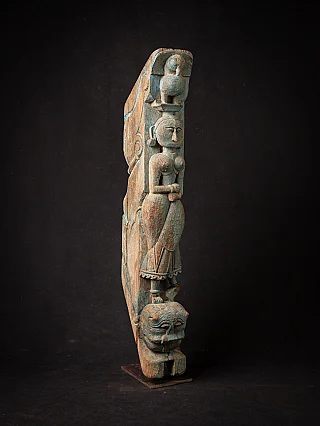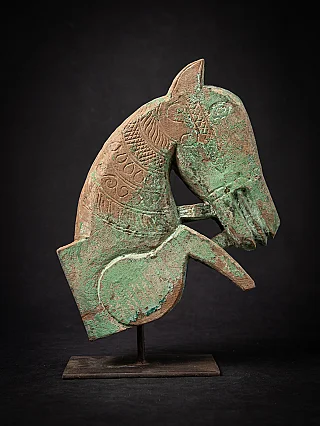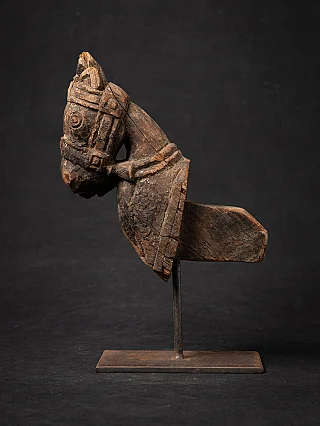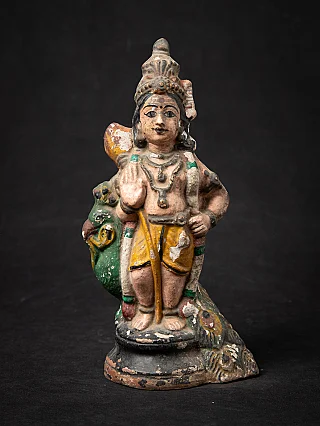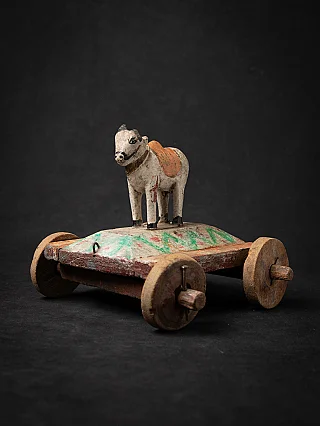The love story of Lord Shiva and Goddess Parvati
Author : Peter Vredeveld

The love story of Lord Shiva and Goddess Parvati is one of the most profound and inspiring tales in Hindu mythology. Their union symbolizes the perfect balance of masculine and feminine energies, devotion, and spiritual enlightenment. Together, they represent the eternal cosmic dance of creation and destruction, teaching us the importance of harmony, love, and dedication.
Who is Lord Shiva?

Lord Shiva, known as Mahadeva, Rudra, and Neelkanth, is one of the principal deities in Hinduism. As the Destroyer in the Trimurti (Trinity), alongside Brahma (the Creator) and Vishnu (the Preserver), Shiva plays a vital role in the cycle of life and death. He is often depicted with powerful symbols:
- Third Eye: Represents wisdom and the destruction of evil.
- Trident (Trishul): Symbolizes control over the three Gunas (Sattva, Rajas, Tamas).
- Crescent Moon: Represents the cyclical nature of time and life.
- Blue Throat (Neelkanth): A result of drinking the poison Halahala during the churning of the ocean (Samudra Manthan).
- Serpents & Rudraksha: Signify control over fear and worldly attachments.
- Ganga Flowing from His Hair: Symbolizes purity and life-giving energy.
Shiva resides on Mount Kailash, leading a simple ascetic life, detached from materialism and worldly affairs.
Who is Goddess Parvati?

Goddess Parvati, Lord Shiva's divine consort, is the reincarnation of Goddess Sati, Shiva's first wife. She is the daughter of King Himavan (the Himalayas) and Queen Menavati, embodying strength, devotion, and feminine energy (Shakti). Parvati is also known by various names, such as Durga, Kali, Annapurna, and Uma, each representing different forms of divine power. As the Mother of the Universe, she balances Shiva's ascetic nature with love, compassion, and nurturing energy.
Before They Met: The Story of Sati and Shiva
Hindu God statues from the land of Himalayas
Before Parvati, Shiva was married to Goddess Sati, the daughter of King Daksha. Sati was deeply devoted to Shiva, but her father disapproved of their union. To insult Shiva, Daksha organized a grand Yagna (sacrificial ritual) and deliberately excluded Shiva. Despite warnings, Sati attended the Yagna, only to be humiliated by her father. Unable to bear the disrespect towards her husband, Sati self-immolated in the fire of her yogic power.
Enraged, Shiva unleashed his fierce form, Virabhadra, and destroyed Daksha's Yagna. Grief-stricken, he carried Sati's burnt body across the universe, leading to the creation of Shakti Peethas, sacred sites where parts of Sati's body fell. Shiva then renounced the world, retreating into deep meditation in the Himalayas.
The Love Story of Shiva and Parvati
Parvati, born as the daughter of the Himalayas, was destined to reunite with Shiva. She was drawn to him from a young age and vowed to marry him. However, Shiva, still grieving for Sati, remained lost in meditation and showed no interest in marriage.
Determined to win his love, Parvati undertook severe penance (Tapasya) for years, meditating in harsh conditions. She endured extreme weather, abstained from food, and focused entirely on her devotion to Shiva. Her unwavering dedication moved even the gods, who sought the help of Kama Deva (God of Love). Kama shot his arrow at Shiva to awaken his emotions. Enraged, Shiva opened his third eye and burned Kama to ashes. However, moved by Parvati's devotion, Shiva finally accepted her as his consort.
Their grand celestial wedding, attended by all gods and sages, marked the ultimate union of Shiva (consciousness) and Shakti (energy).
Life After Marriage: The Divine Family
After their marriage, Shiva and Parvati lived on Mount Kailash, balancing their divine duties. They had two famous sons:
- Lord Ganesha: The remover of obstacles created by Parvati from her divine essence.
- Lord Kartikeya (Murugan): The god of war, created to defeat the demon Tarakasura.
Their family symbolizes the balance between duty, devotion, and power.
Ardhanarishwara

One of the most profound representations of Shiva and Parvati's relationship is Ardhanarishwara, where they are depicted as a single entity, half-male and half-female. This form signifies:
- The unity of masculine and feminine energies.
- The interdependence of Shiva (pure consciousness) and Shakti (divine energy).
- The balance of creation and destruction in the universe.
The Ardhanarishwara form teaches that neither energy can exist independently; they complement and complete each other, symbolizing perfect harmony.
Other Forms of Shiva and Parvati
Apart from their widely known forms, Shiva and Parvati appear together in various divine manifestations:
- Bhikshatana and Annapurna: Shiva as a wandering beggar, and Parvati as the goddess who feeds him, signifying the interdependence of renunciation and nourishment.
- Nataraja and Sivakami: Shiva as the cosmic dancer, and Parvati as his consort, witnessing and complementing the eternal dance of creation and destruction.
- Kameshwar and Kameshwari: The divine lovers embodying passion and devotion in marriage.
Maha Shivaratri: The Great Night of Shiva
Maha Shivaratri is a significant Hindu festival celebrating Lord Shiva and his divine union with Parvati. It falls on the 14th night of the dark fortnight in the Hindu month of Phalguna. Devotees observe fasting, meditate, and offer prayers to Shiva throughout the night.
Why is Shivaratri Celebrated?
- Commemoration of Shiva and Parvati's Marriage: It is believed that Shiva and Parvati were married on this day.
- The Night of Cosmic Energy: Devotees believe that spiritual energy is at its peak during this night, aiding meditation and enlightenment.
- Shiva's Cosmic Dance (Tandava): Some believe that on this night, Shiva performs his cosmic dance, symbolizing destruction and renewal.
Devotees worship Shiva by offering Bael leaves, milk, and water to the Shivalinga, chanting mantras like Om Namah Shivaya, and staying awake all night in meditation and devotion.
Share this page




















